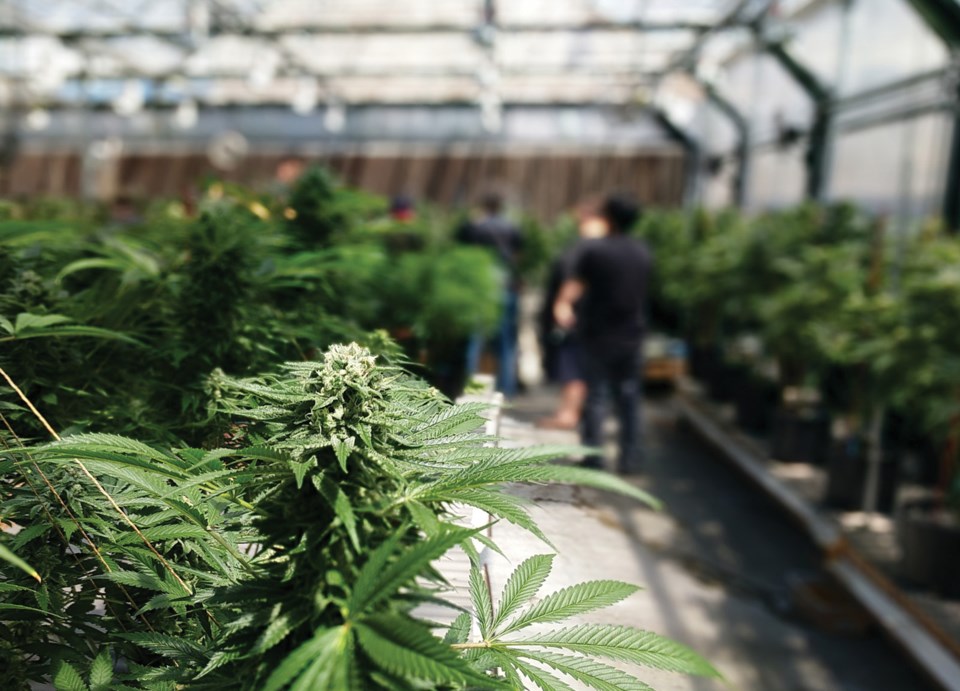Councillors in Sechelt will revisit proposed zoning amendments for cannabis production, processing and sales at their Sept. 18 meeting.
A report prepared by planning staff outlines changes made after two public hearings on the draft amendments and recommends council adopt the new bylaw.
The zoning changes follow council’s April 3 adoption of a policy on cannabis retail that set out general requirements and allowable locations, restricting them to the downtown core and Wilson Creek business area.
The amendments update definitions so they match federal and provincial legislation and establish a 150-metre buffer zone for retailers around schools, except in the case of the alternative school downtown where the buffer will be 50 metres.
The bulk of the changes recommended following the public hearings are related to cannabis production and cultivation.
The bylaw amendments that will go to council on Sept. 18 increase the setback from schools for production facilities from 150 metres to 300 metres and decrease the minimum lot area from 4,000 sq. metres to 3,000. Buildings would have to be 50 metres from any lot line that abuts a residential property.
“As odour controls are required by several orders of government, reduced setbacks should not be an issue in industrial areas,” the planning report says.
The same setbacks, buffers and minimum lots sizes would apply to micro production facilities, those with 200 sq. metres or less of “plant canopy,” as well.
For cultivation in the Agricultural Land Reserve (ALR), a minimum parcel area of five hectares and a 1,000-metre setback from schools and 100-metre setback from residentially zoned properties have been removed. They were replaced by a limit of one Health Canada cannabis cultivation licence allowed per property, and a maximum gross floor area for buildings used in cannabis growing of 1,000 sq. metres and a setback of 100 metres from any lot line.
Non-soil-based facilities, such as greenhouses with cement floors, would be prohibited, “as such facilities are not suitable to be sited on agriculturally capable
lands.”
Micro-cultivation would have to follow the same rules.
“The amendments allow the district to comply with ALR regulations while providing a counterpoint to the proposed cannabis regulations for industrial areas. The intent is to protect agricultural lands as much as possible from industrialization and non-farm uses,” according to the report.
Correspondence between the provincial government and the district on cannabis regulation, obtained by Coast Reporter under access to information, show some of the difficulties in hitting what Mayor Darnelda Siegers recently characterized as a “moving target,” when it comes to those ALR rules.
At various times since legalization came into effect, the district has sought provincial guidance on apparently contradictory information about how much authority local governments have in setting rules for cannabis cultivation on ALR properties, including whether a 16-hectare (40-acre) ALR property could be legally used for both cannabis production and a co-located winery, cidery, or brewery or distillery.
On that question, provincial officials said “there may be some significant challenges,” but without a specific proposal they couldn’t offer much guidance.
Other issues raised in the correspondence include questions around whether a homeowner already running a legal grow-op to provide cannabis as the assigned grower for others under the medical regulations could do the same for the four plants allowed per adult under the recreational cannabis rules.
The answer on that question was, “If a federally-approved site to grow cannabis for medical purposes is a dwelling house, the four non-medical cannabis plants are in addition to the number of cannabis plants authorized to be grown for medical purposes.”
Sechelt’s proposed bylaw would not prevent people from growing the allowed amount of personal-use recreational cannabis in their homes.



